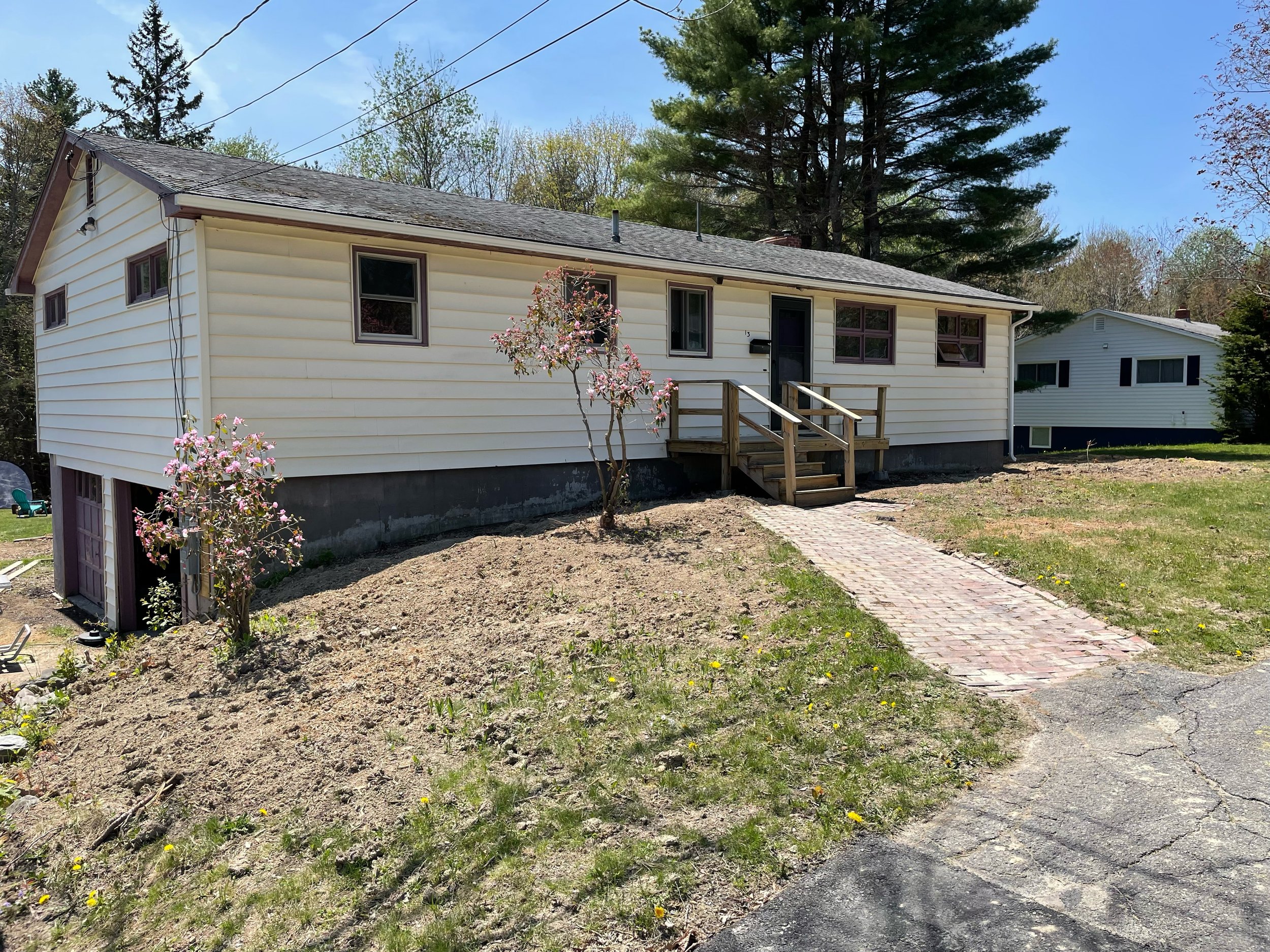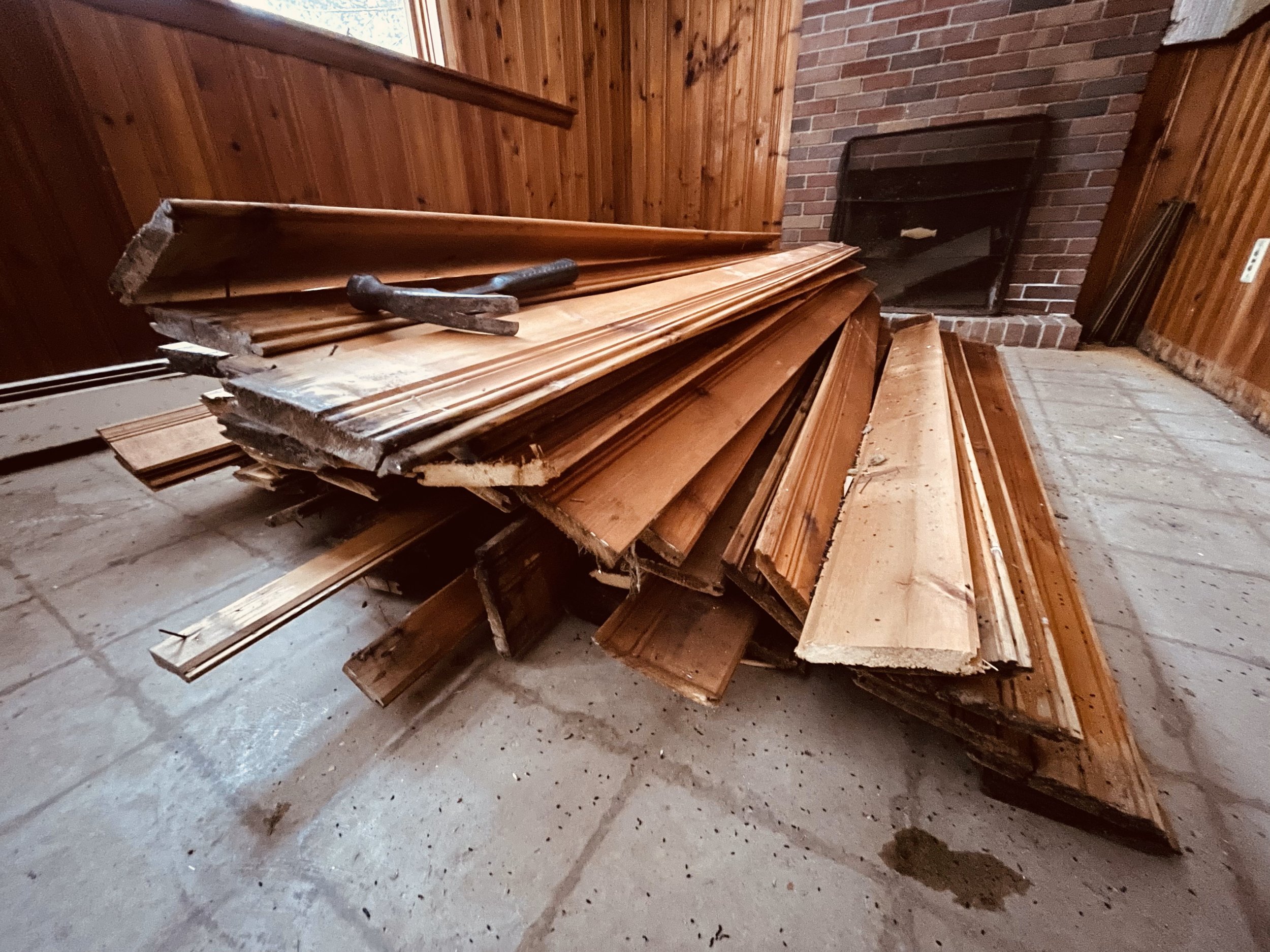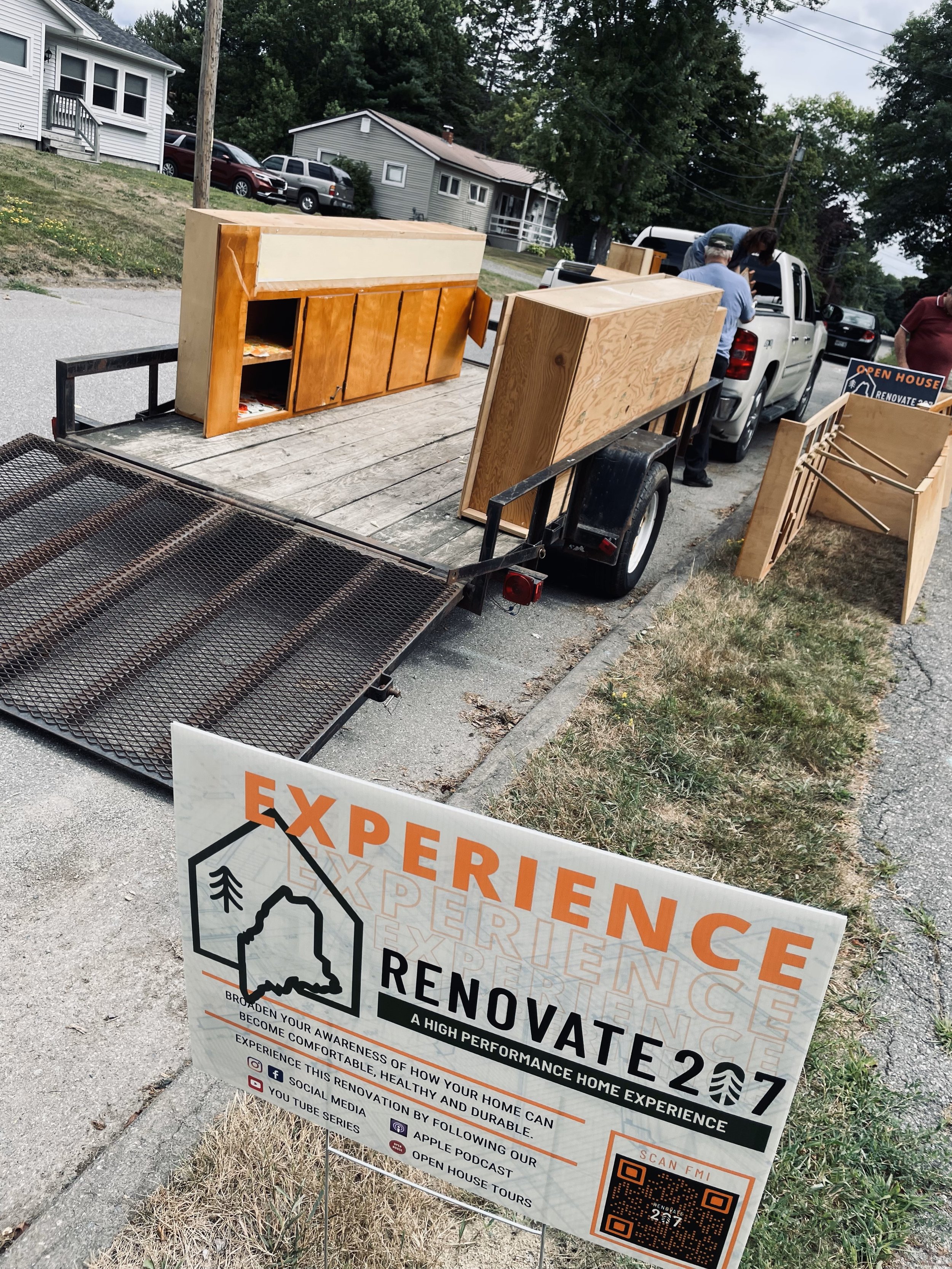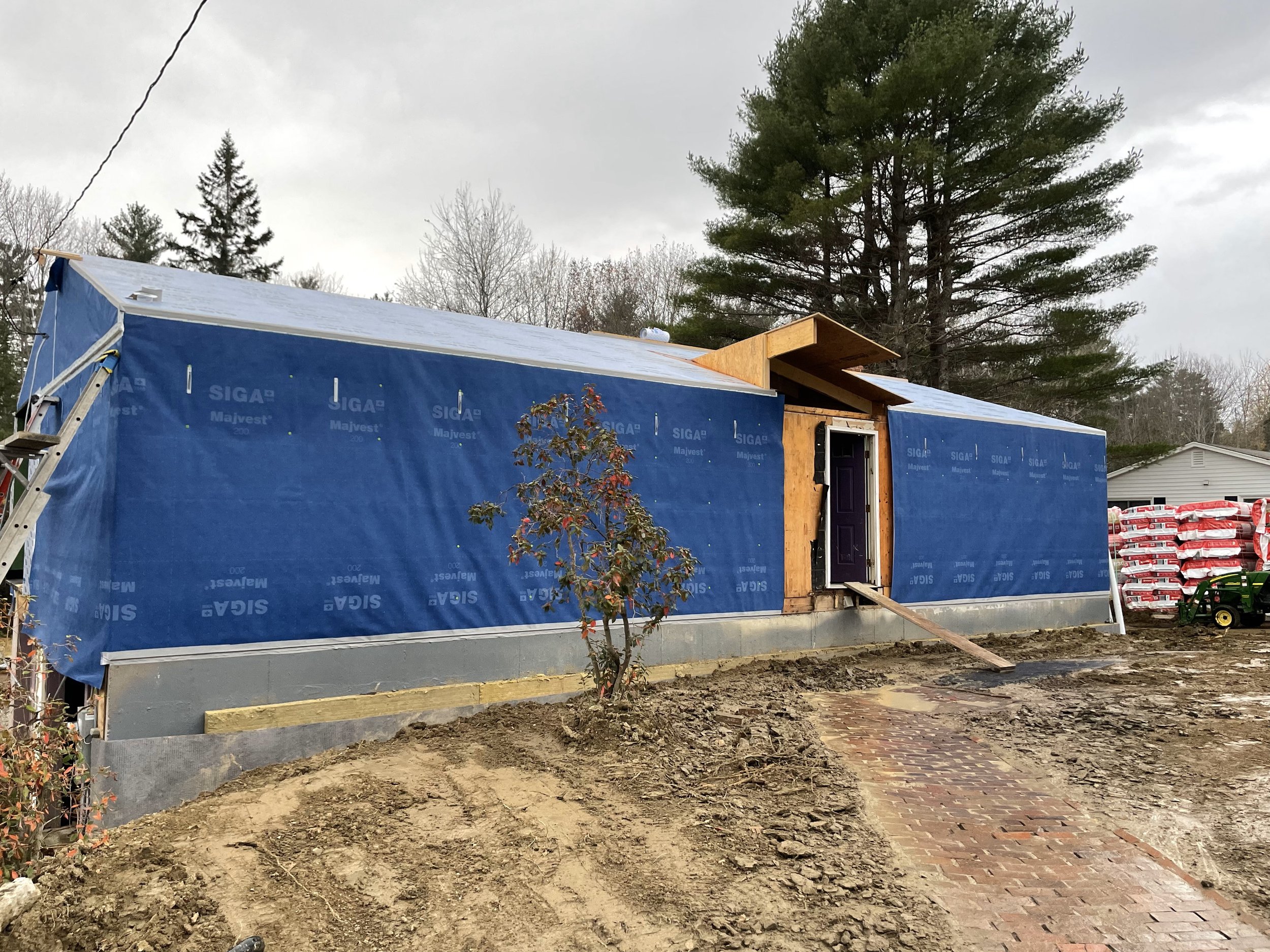Deconstruction offers a solution to reduce waste in the construction industry
By June Donenfeld
trivia night question:
How much of Maine’s landfills are taken up by construction and demolition debris (CDD)—things like asphalt, drywall, wood, concrete, scrap metal or furniture?
Not a clue?
Let’s go with a multiple choice query:
15%?
30%?
50%?
Answer number #3 is the only one that comes close, and it’s not trivial: 52%.
Construction and demolition debris represents not only the largest waste stream in the United States but the world. In 2020, the Environmental Protection Agency reported that 600 million tons of CDD are generated each year in the U.S. alone, which is twice the amount of the municipal solid waste (MSW) that U.S. consumers produce, like food, paper, plastic and textiles. 90% of that CDD comes from demolition, not construction. Picture this: The debris from the demolition of a single average American home is equal to what the typical American throws away in their lifetime; with 350,000 structures demol ished annually in the U.S., the quantity of waste is staggering. And trends over the past three decades have only exacerbated the problem: The number of buildings is growing, while there have also been drops in the quality of materials, the ability to recycle them and the age of buildings being demolished, with many torn down and replaced before they’ve worn out.
If only Maine were as good at recycling its CDD as other things. A groundbreaking 2021 study by Eunomia, an independent sustainability consultancy, examined how much of the U.S.’s MSW is incorporated into new products. They found that Maine is #1 in the nation for its impressive 74% recycling rate of common containers and packing materials, like glass jars, cans, rigid plastic packaging and cardboard. But when it comes to our current CDD recycling rate, which includes only materials that have been recycled into new products or beneficially used as fuel (i.e., clean wood waste), the numbers are woefully low. According to the Maine Department of Environmental Protection’s (DEP’s) January 2023 report on solid waste generation and disposal, which covers 2020 and 2021, the two-year average recycling rate for CDD was 1.15%. By comparison, other states are doing much better in their CDD recycling, like Massachusetts, which has a rate of 22% and landfill bans on many of the CDD materials that Maine’s landfills accept.
So how can we do better? Deconstruction.
This process—also known as disassembly or disentangling—is the systematic dismantling of all or parts of a building to maximize the material that’s salvaged for reuse, recycle what’s not reusable and minimize what goes to landfill or is incinerated. Deconstruction produces far less waste than conventional demolition, lessens its environmental impact and lowers the demand for virgin materials when items are recycled or reused, a critical aspect of the process. As Naomi Beal, Executive Director of passivhausMAINE, says, “When we talk about passive houses, it’s not enough to be satisfied with a perfect building. We have to ask, ‘How did we get there?’ As part and parcel of sustainable construction and design, we need to create a system that acknowledges construction waste is an imperative part of the cycle.”
As wonderful as passive houses and other high-performance buildings can be in terms of the greenhouse gases they (don’t) emit when in use, there is also a high carbon cost to their creation. This cost lies in the greenhouse gases emitted during the building’s construction through materials extraction, manufacture and transport; collectively known as embodied carbon, these gases account for 20–50% of a building’s emissions over its lifetime. It takes two to three decades (or more) for the majority of new zero-emissions buildings to compensate for the carbon emissions generated during construction. So, when we deconstruct a home and reuse the materials, we are making a significant contribution toward achieving carbon neutrality.
These environmental benefits alone would be reason enough to deconstruct buildings in Maine, but there are many more. Developers would save money because of lower disposal costs and being able to reuse certain items; they could also get tax deductions for donated materials. Communities and individuals benefit, too. The San Antonio Office of Historic Preservation, for instance, estimates that deconstruction employs six times more people than demolition does for the same project, with reuse, refurbishment and recycling creating roughly 300 jobs for every 10,000 tons in deconstructed materials. The number of jobs in manufacturing, retail and building trades also increases thanks to deconstruction, and for people looking to build or renovate a home, salvaged materials can be more affordable than new ones.
An array of beautiful door hardware, awaiting new homes. PHOTO COURTESY OF OLD HOUSE PARTS CO
What are the nuts and bolts of deconstruction? It can include planning for reuse and recycling materials; removing furniture for donation before the project starts; “soft-stripping,” or removing high-value materials like appliances, cabinets and architectural items; hybrid-deconstruction for materials like flooring, windows and doors; and full deconstruction, which means salvaging all wood and other valuable materials. There are some objections to deconstruction, most commonly that it costs more in time and money than demolition. But seasoned deconstruction experts like Dave Bennink and Erich Kruger say this is just not the case. Bennink, director of the Building Deconstruction Institute and owner of Re-Use Consulting in Bellingham, Washington, has trained hundreds of workers and consulted for clients in 44 U.S. states and nine countries. To date, his organization has salvaged or deconstructed over 5,000 projects in North America. In a presentation to the Massachusetts DEP Deconstruction Working Group in December 2022, he said, “The first time we took down a house … it took three and a half weeks, but if I had to take down that house today [thanks to the skills and techniques I’ve developed], if it took more than 3½ days, I’d be disappointed.”
Kruger is a member-owner of Deconstruction Works, a Vermont specialist in the salvage and reuse of houses, outbuildings and commercial interiors in Vermont, New Hampshire and Western Massachusetts. At the same event, he weighed in on the cost of deconstruction, noting that the average house contains much of value, “from floorboards to HVAC,” and, thanks to tax deductions, “a $100,000 donation value to a charity almost covers the deconstruction cost.” Deconstruction appraisers Green Donation Consultants in Virginia go even further in their estimates, saying, “Initially, deconstruction does cost more than demolition… However, once you factor in the tax savings, deconstruction often comes out ahead.”
Deconstruction in Maine
If all this sounds good (and it is), you might be disappointed if you try to track down a deconstruction specialist in Maine. This is because there seem to be none—at least a long online search didn’t turn up any, nor did a lot of asking around. There are professionals who will come salvage the old-growth lumber from that 19th-century tumbledown barn on your property and put it to excellent use in the making of beautiful furniture or as architectural elements in new builds, but that’s different. Kruger says he’s gotten calls from homeowners in Maine but hasn’t been able to help them, as they’re outside his company’s service area—and he hasn’t heard of any similar businesses that do it here either.
But unmet demand can translate into excellent business opportunities, so, as Kruger says, “Maine would be a great place to start a deconstruction company, as the barrier to entry is relatively low.” Budding entrepreneurs could certainly use his company as a model and an inspiration. The items that come out of Deconstruction Works’ projects largely go to reuse or architectural salvage stores, and he also has a “robust online presence for selling materials,” posting them on the company website or their Facebook page, where they are snapped up in short order.
Randy Rand, a high-performance builder, consultant and Passive House tradesperson in Orono (and a member of this magazine’s advisory board), has had a similar experience while doing a gut renovation of his home to bring it up to Passive House standards. A priority was to “eliminate as much waste as I could going to landfill during the process, and so I wound up needing only one dumpster for the old materials, instead of the three I would have used if I’d demoed everything.” That lone dumpster contained drywall, fiberglass insulation from the existing walls and asphalt shingles. He had eager takers on Facebook Marketplace for everything else, like his 60-year-old porcelain bathtubs.
It’s a process: Rand’s home comes down and goes back up again. PHOTOS: RANDY RAND.
Given that Maine has the oldest housing stock in the country, there is immense potential for deconstruction and all the benefits it brings. And as more municipalities across the country, from Portland, Oregon to San Antonio to Boston, are forging ahead with their own deconstruction ecosystems, the good news is that we can learn from how they’ve achieved their many successes, from incentives (carrots) to ordinances (sticks) to entrepreneurship and more. At least two Maine cities have already gotten started: Portland and South Portland plan to reduce their CDD through public-private partnerships locally and at the state level. A vital piece of the puzzle will be to create a stronger regional market for CDD and material reuse, and plans are afoot to do so through local policies, campaigns, training and state-level initiatives.
There are other encouraging signs. Remember that dismal average CDD recycling figure of 1.15% noted earlier? There’s good news there, too. Maine recently passed legislation requiring higher recycling rates for all solid waste processing facilities, with a goal of reaching a rate of 50% for CDD by 2026. Megan Mansfield-Pryor, environmental specialist with the Maine DEP in their Bureau of Remediation and Waste Management, is optimistic about the outcome. “The changes to Maine law guiding CDD management are both environmentally and economically beneficial,” she says. “With the increasingly high recycling rates, we hope that the incentive to keep CDD out of landfill will result not only in more recycling of demoed material, but potentially provide more incentive for the reuse of demo debris through deconstruction and architectural salvage.”
Having a centralized, online place to buy and sell deconstructed materials and items would also, as Rand says, “be a game-changer.” One highly successful example is right nearby in Massachusetts, where the Center for EcoTechnology runs EcoBuilding Bargains, the largest reclaimed and surplus building materials store in New England. We can find inspiring models outside the U.S., too, like Rotor DC in Belgium, a worker-owned cooperative that dismantles, processes and trades in salvaged building components, selling them through its enormous online catalog of items, from toilets to terrazzo tiles.
But we can’t talk about deconstruction without also touching briefly on the need to prevent waste by design, through adaptive building reuse and design for disassembly (DfD). The National Trust for Historic Preservation reports that when you compare buildings of comparable size and function, their reuse “almost always offers environmental savings over demolition and new construction … creates more and better-paying jobs than new construction, and … keep[s] more dollars circulating in the local economy.” And when a community keeps its special character and heritage, it appeals to residents, businesses and tourists alike, creating an environment that is culturally, economically and socially vibrant. In Maine, you can already see many prime examples of the successful adaptive reuse of old buildings, like the fire station in Saco that was transformed into commercial and residential space, or the landmark Cony Flatiron building in Augusta, which is now a beautiful, energy-efficient apartment building. And there is potential for many more.
DfD, on the other hand, is a thoughtful approach to building new in which the design itself facilitates future changes or dismantling (partially or entirely) to recover systems, components and materials so the building can be recycled as efficiently as possible at the end of its useful life. In Maine, this might mean specifying products that can be recycled again and again, like wood fiber insulation from TimberHP by GO Lab in Madison, or foam glass insulation in foundations, walls and roofs, sustainably produced at the new, solar-powered Glavel factory in Vermont. At its best, DfD means that future buildings could effectively function as material banks, whose components could be reused over and over again.
But because of our aging building stock, we need to take action now, focusing on the buildings we already have that are good candidates for deconstruction. Which is just what Bath-native Sarah Nichols, Sustainable Maine director at the Natural Resources Council of Maine, wants to do. “Going forward, I want to make deconstruction a priority for our organization, and Maine is exactly the kind of place that will see the value in it,” Nichols says. “Mainers already have the ethic of not throwing away things that are still useful, and they’re friendly, too—they like to share. The values and ethics are here, and we could also benefit because we’re a relatively small state. It will be a huge, missed opportunity if we allow CDD to go to the landfills the way it largely does now.”
Nichols thinks that a bottom-up approach would work better initially than a top-down one, noting, “Though there are state-level policies that will be helpful, starting in municipalities will be the way to go, as they are the ones who issue the demolition permits. We will probably focus at first on towns that are interested in deconstruction.”
And she’s clear on where she feels those deconstructed materials and other items should go. “I want to see [them] stay local—if not in Maine, then regionally, in New England. We’d be saving a huge number of resources and providing equally huge benefits for people who use these materials in their homes. We’d also be supporting the local economy and enabling people to develop new skill sets.”
But even beyond these remarkable benefits, Nichols has a larger vision of how deconstruction could act as a catalyst for positive interaction. “If you have a deconstruction ordinance in a community,” she says, “this will bring together unlikely allies: people with housing or job needs, for example, along with architects and designers, recyclers, landfillers and homeowners. Some really cool magic could happen.”
Let the magic begin.
BEFORE AND AFTER: Listed on the National Register of Historic Places, the Wall Street Methodist Episcopal Church in Auburn, NY was formerly the home of the African Methodist Episcopal Zion Church. The Gothic Revival-style building was built in 1788, renovated in 1887 and torn down in 2021. The church was also notable for its 19th century biracial congregation that included Harriet Tubman’s nephew. PHOTOS COURTESY OF ROBLEE HISTORIC PRESERVATION
This article appeared in the Spring 2023 edition of Green & Healthy Maine HOMES. Subscribe today!
Find Maine experts that specialize in healthy, efficient homes in the Green Homes Business Directory.











